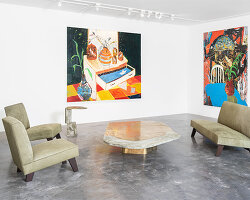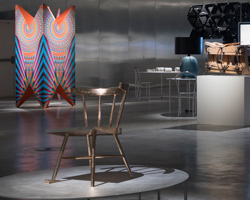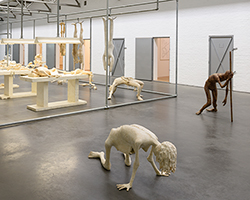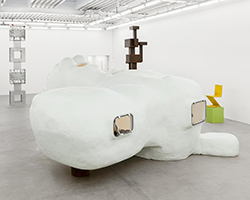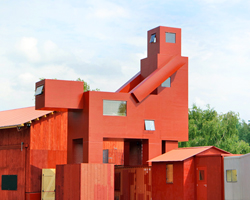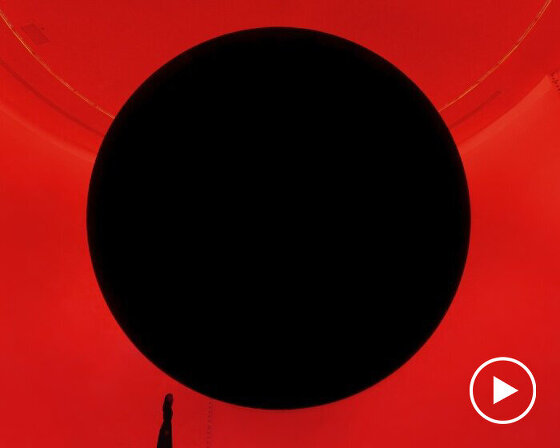‘infernopolis’ submarine wharf, rotterdam may 29 – september 26, 2010 ‘darwin’ 2008 polyester 1300cm x 1000cm x 260cm systems and organs image © designboom
‘infernopolis’ is atelier van lieshout‘s latest exhibition taking place at an abandoned submarine wharf in rotterdam, netherlands. organized by the port of rotterdam and the museum boijmans van beuningen, this inaugural exhibition addresses issues that are central to atelier van lieshout’s practice including autonomy, self-sufficiency, power and the economy. in the submarine wharf, with an area of almost 5000m2, atelier van lieshout – established by the rotterdam-based artist joep van lieshout in 1995 – is exhibiting two immense installations and a forest of sculptures. together these elements form a terrifying setting in which the leading role is played by medical instruments, vacuum pumps, flayed bodies, human excrement, giant sperm cells and bodily organs.
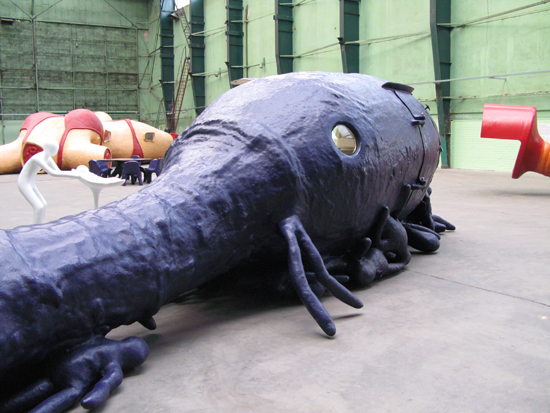 image © designboom
image © designboom
according to lieshout, visitors to ‘infernopolis’ move among sinister installations and tableaux in which the distinctions between good and evil, life and death, and reality and fiction are meant to be erased.
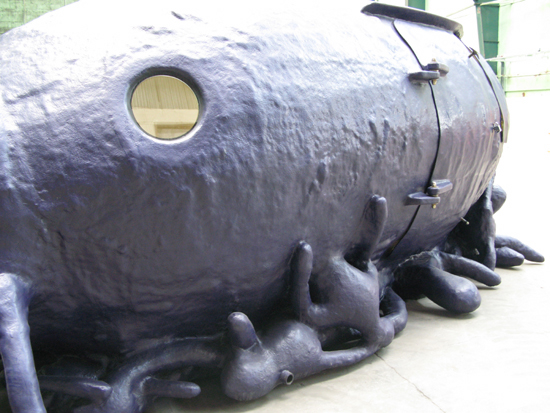 detail image © designboom
detail image © designboom
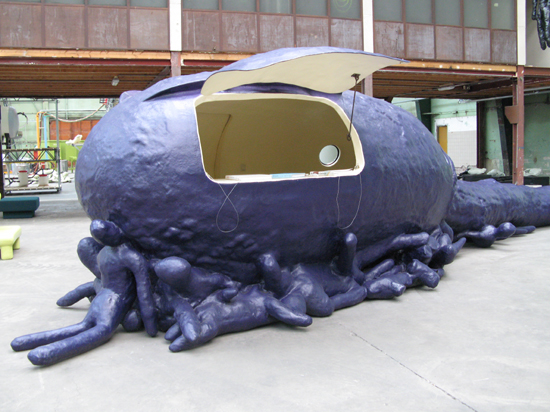 image © designboom
image © designboom
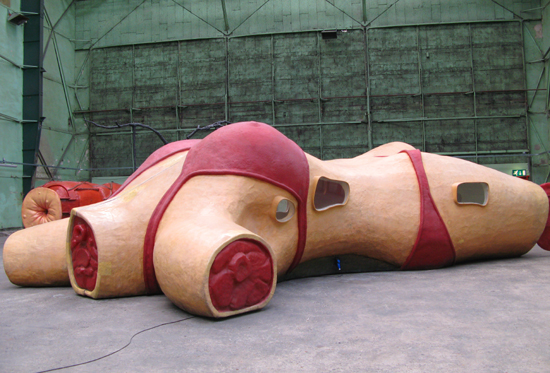 ‘bikinibar’, 2006 polyester 950 cm x 600 cm x 300 cm systems and organs image © designboom
‘bikinibar’, 2006 polyester 950 cm x 600 cm x 300 cm systems and organs image © designboom
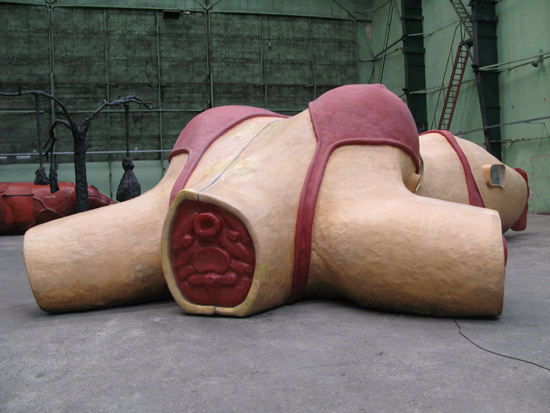 image © designboom
image © designboom
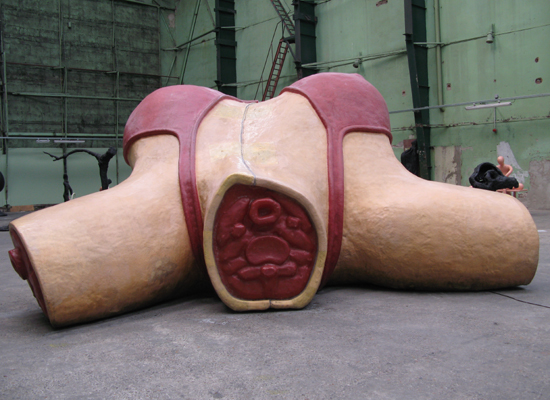 image © designboom
image © designboom
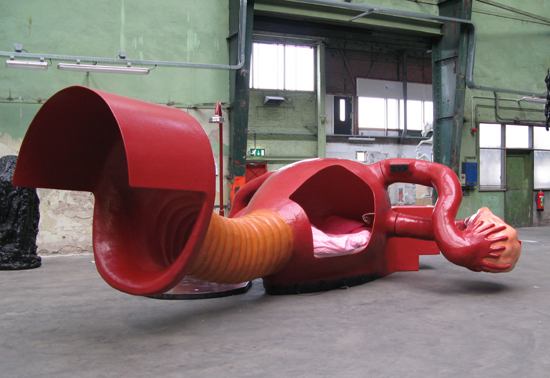 ‘wombhouse’, 2004 polyester 630 cm x 236 cm x 212 cm systems and organs image © designboom
‘wombhouse’, 2004 polyester 630 cm x 236 cm x 212 cm systems and organs image © designboom
the enormous sculptures represent individual body parts but also interconnected, internal organs.
‘I like to work with organs in order to show something of the beauty of our insides and the system behind it’ – AVL
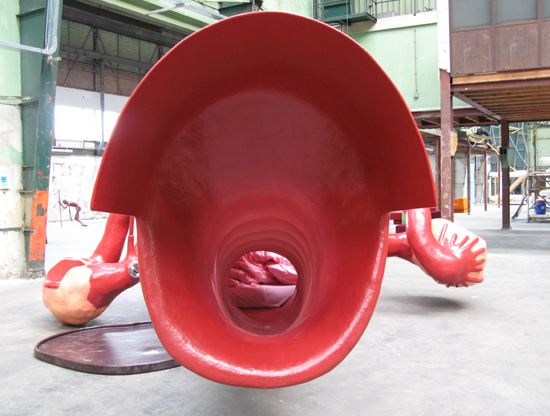 image © designboom
image © designboom
although the organ sculptures are anatomically correct and give us an insight into how the human body is designed, their meaning is to be found, above all, in the similarities between large, coordinated models (society) and intimate, personal systems (the body and its organs). the digestive system, for instance, bears comparison with the world at large, which also consumes and produces. both of these elements are fused in the architectural work ‘barrectum’. this work, which represents the chain or organs in the digestive system (from tongue to anus), is designed as a play for drinking beer.
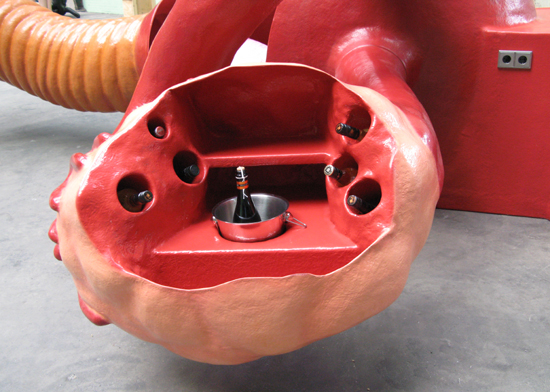 wineholder embedded in the right ovary image © designboom
wineholder embedded in the right ovary image © designboom
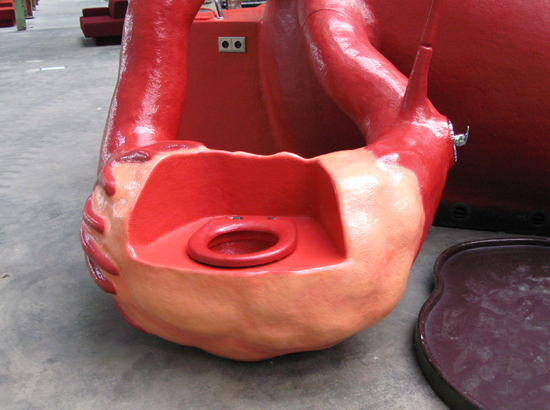 toilet embedded in the left ovary image © designboom
toilet embedded in the left ovary image © designboom
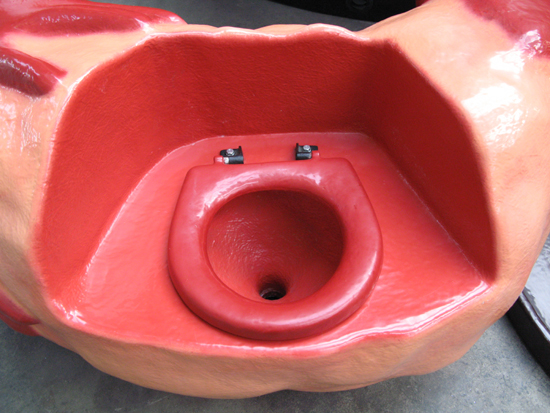 image © designboom
image © designboom
 bed inside the womb image © designboom
bed inside the womb image © designboom
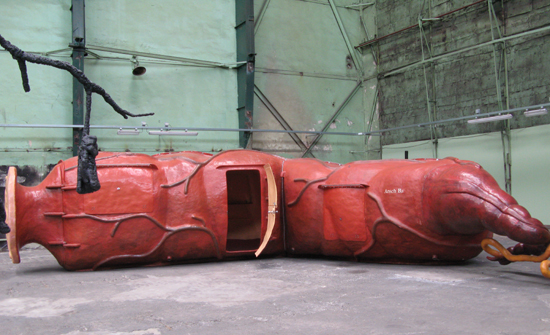 ‘barrectum’ 2005 polyester 800 cm x 800 cm x 250 cm systems and organs image © designboom
‘barrectum’ 2005 polyester 800 cm x 800 cm x 250 cm systems and organs image © designboom
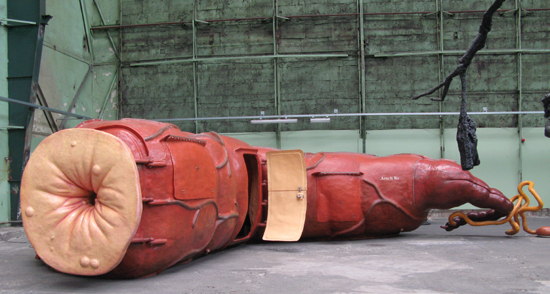 image © designboom
image © designboom
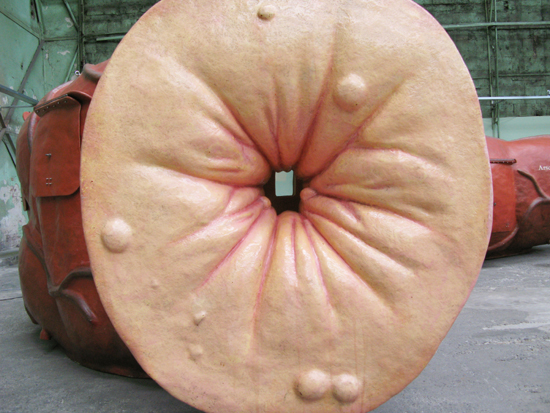 rectal opening with lumps image © designboom
rectal opening with lumps image © designboom
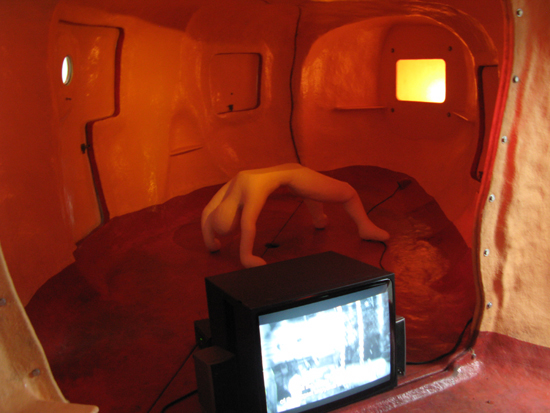 interior of ‘barrectum’ image © designboom
interior of ‘barrectum’ image © designboom
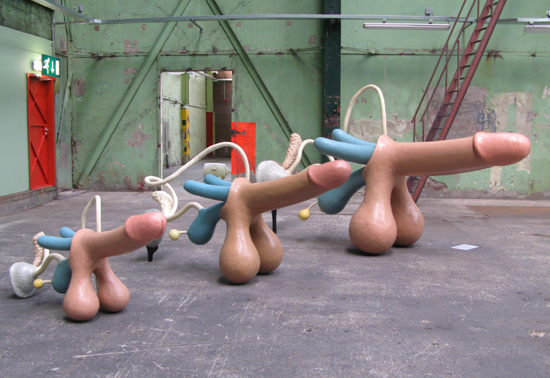 ‘penis S, M, XL’, 2003 polyester 175 cm x 65 cm x 90 cm 206 cm x 80 cm x 123 cm 350 cm x 175 cm x 205 cm systems and organs image © designboom
‘penis S, M, XL’, 2003 polyester 175 cm x 65 cm x 90 cm 206 cm x 80 cm x 123 cm 350 cm x 175 cm x 205 cm systems and organs image © designboom
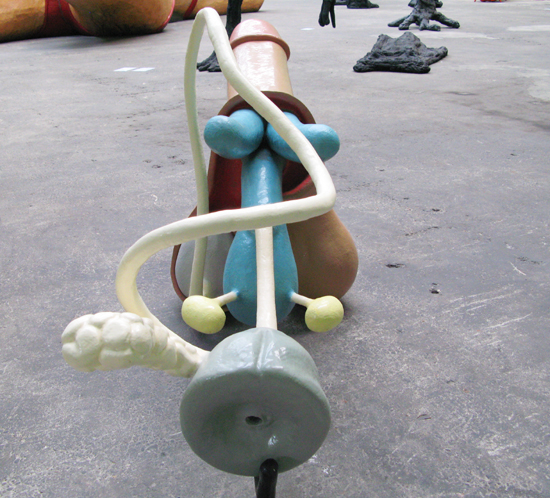 detail of ‘penis’ small image © designboom
detail of ‘penis’ small image © designboom
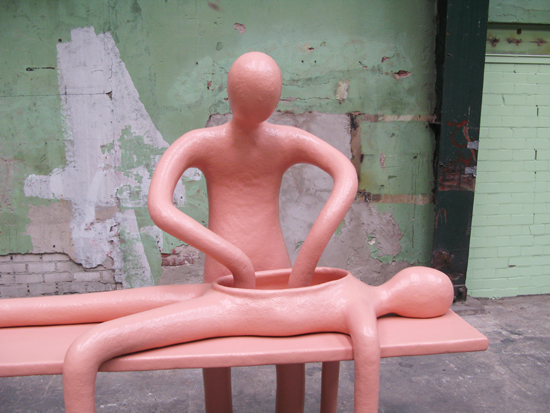 ‘operation’, 2007 polyester systems and organs image © designboom
‘operation’, 2007 polyester systems and organs image © designboom
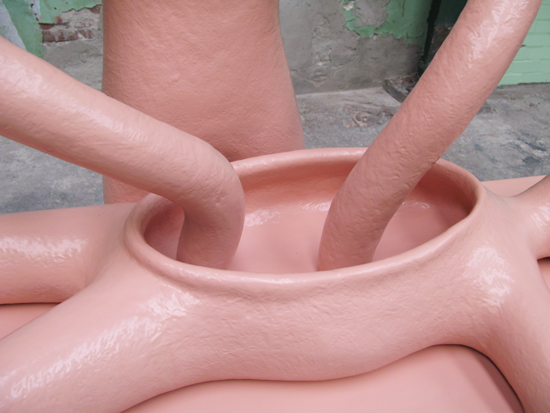 detail image © designboom
detail image © designboom
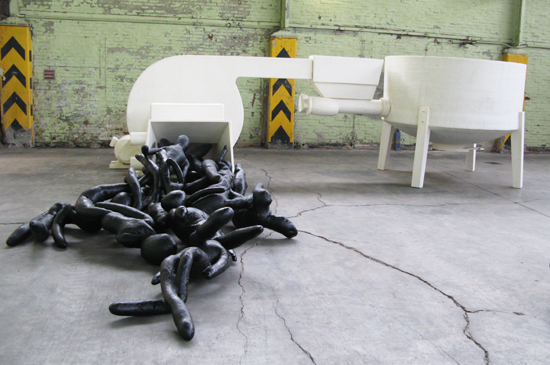 ‘the grinder’, 2009 foam, polyester, paper-maché, varnish 200 cm x 200 cm x 175 cm cradle to cradle image © designboom
‘the grinder’, 2009 foam, polyester, paper-maché, varnish 200 cm x 200 cm x 175 cm cradle to cradle image © designboom
a series of sculptures under the theme of ‘cradle to cradle’ part of the infernopolis exhibition takes the principle that human waste can be food to the extreme. here the machine recycles everything, even people. this means that old materials are used to form new products without loss of quality or waste products.
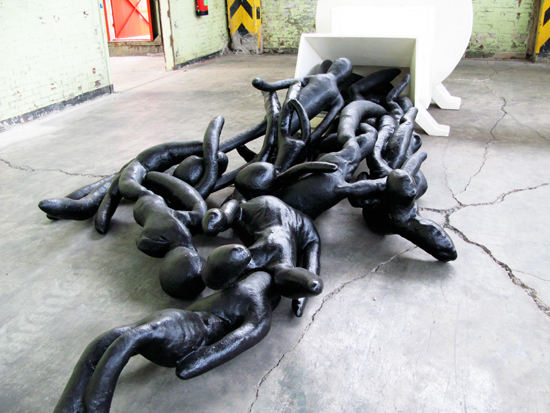 detail image © designboom
detail image © designboom
‘cradle to cradle’ consists of an anatomical theatre, a semi – industrial slaughterhouse and a high-tech operating room. bones, skulls, muscle groups and organs lie on table and flayed bodies hang from rails. in a model of efficiency, the organs are used for transplants, while the flesh, fluids, fat and bones are processed into meat. the remainder is used to harvest energy.
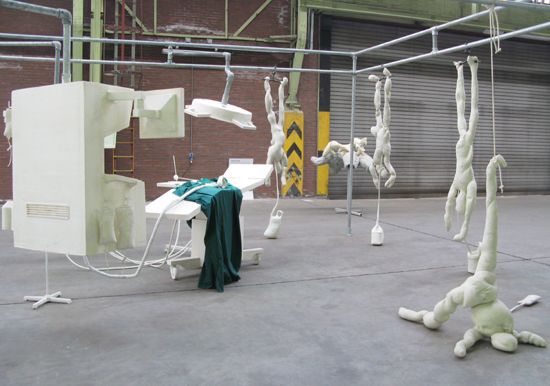 ‘operating room’ image © designboom
‘operating room’ image © designboom
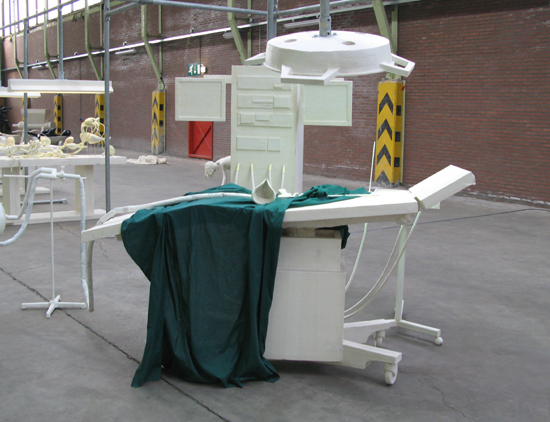 ‘operating chair’ image © designboom
‘operating chair’ image © designboom
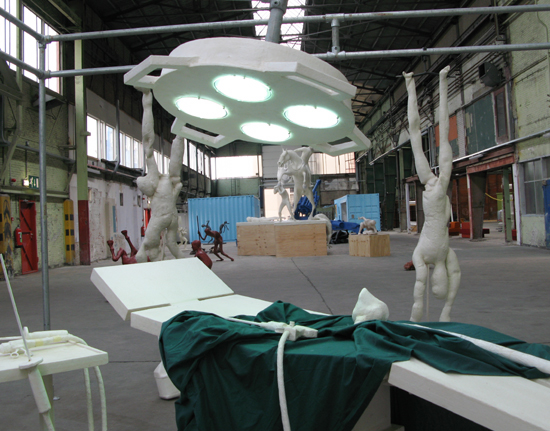 image © designboom
image © designboom
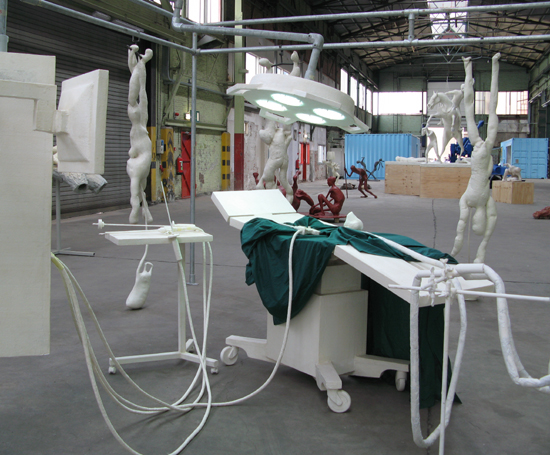 image © designboom
image © designboom
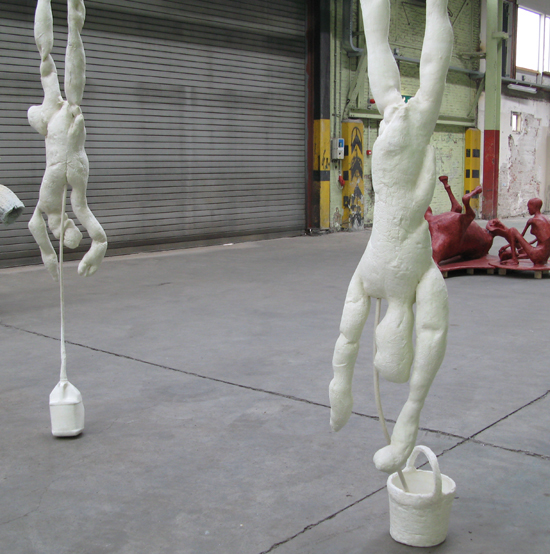 ‘hanging men’, 2009 foam, papier- maché, varnish 210 cm x 67 cm x 40 cm cradle to cradle image © designboom
‘hanging men’, 2009 foam, papier- maché, varnish 210 cm x 67 cm x 40 cm cradle to cradle image © designboom
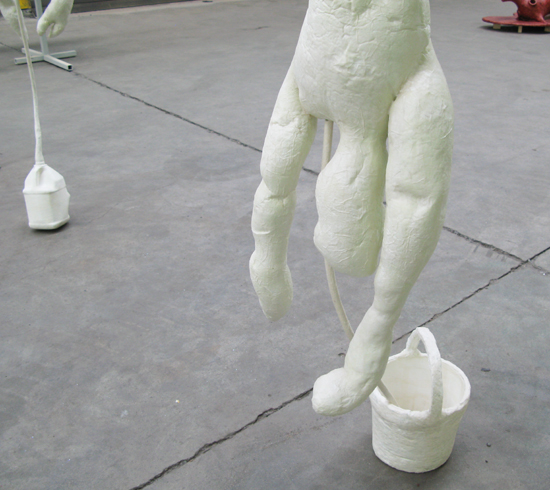 detail image © designboom
detail image © designboom
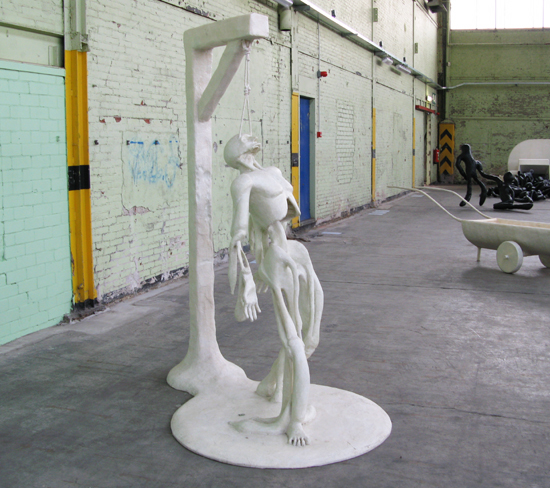 ‘uomo analyticus’, 2009 foam, papier-maché, varnish 160 cm x 115 cm x 210 cm cradle to cradle image © designboom
‘uomo analyticus’, 2009 foam, papier-maché, varnish 160 cm x 115 cm x 210 cm cradle to cradle image © designboom
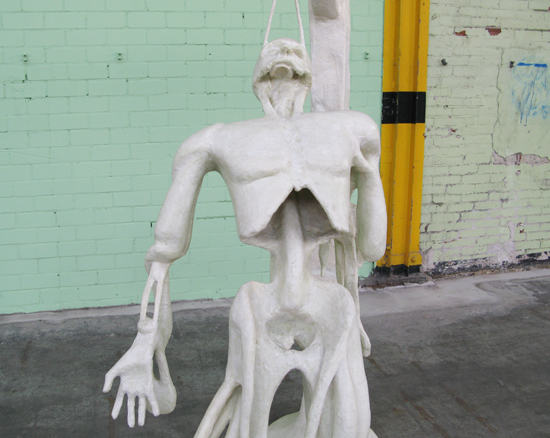 image © designboom
image © designboom
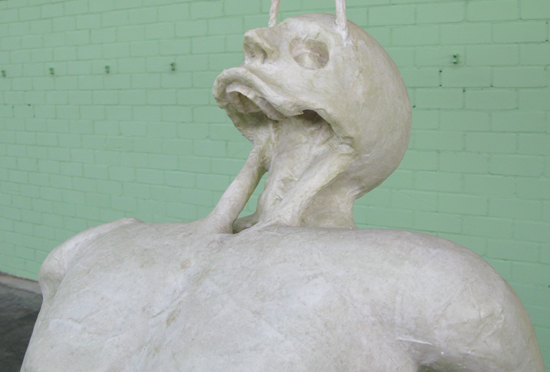 image © designboom
image © designboom
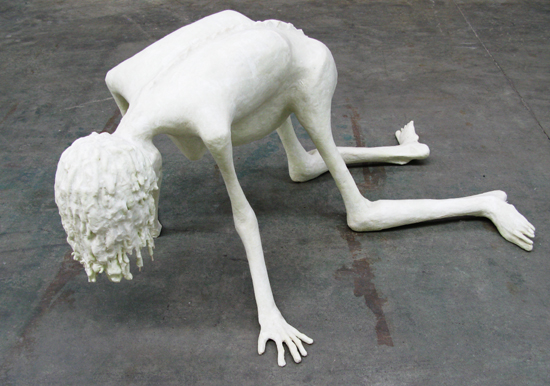 ‘open bell woman’, 2009 foam, papier- maché, varnish 140 cm x 85 cm x 75 cm image © designboom
‘open bell woman’, 2009 foam, papier- maché, varnish 140 cm x 85 cm x 75 cm image © designboom
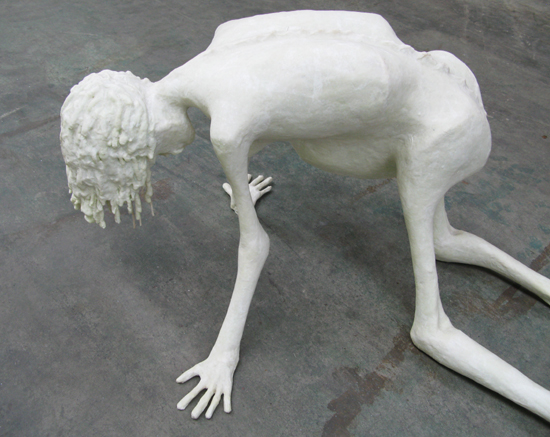 image © designboom
image © designboom
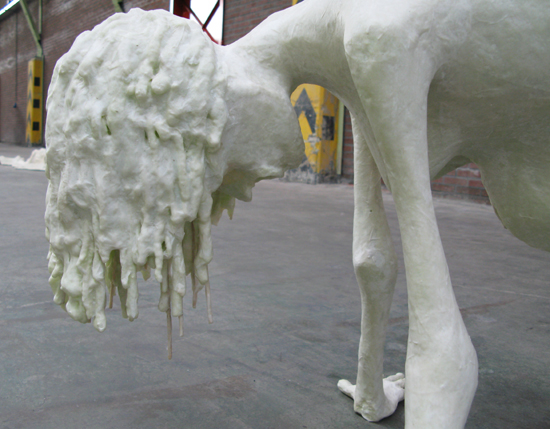 detail image © designboom
detail image © designboom
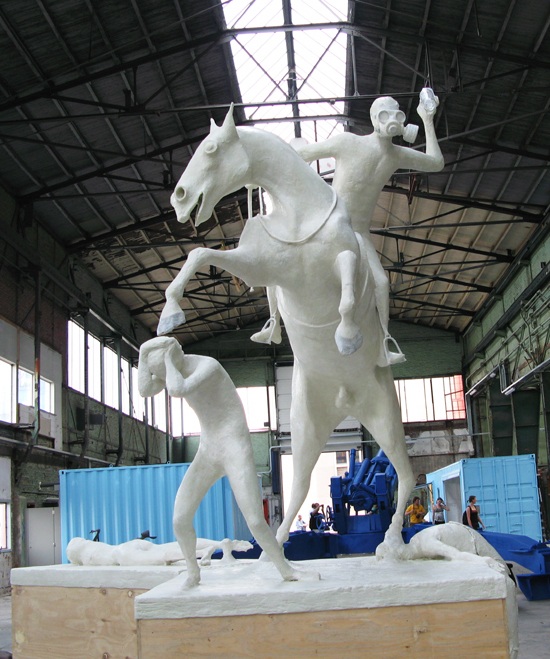 ‘untitled’. 2010 foam, horseskeleton steel, paverpol, japanese ricepaper, blood 400 cm x 300 cm x 400 cm heroic sculptures image © designboom
‘untitled’. 2010 foam, horseskeleton steel, paverpol, japanese ricepaper, blood 400 cm x 300 cm x 400 cm heroic sculptures image © designboom
one part of the submarine wharf contains atelier van lieshout’s most recent pieces under the theme title ‘heroic scuptures’. the prancing horse and the large, abstracted cannon (WWIII) were made in 2010 as a monument dedicated to both war and heroism.
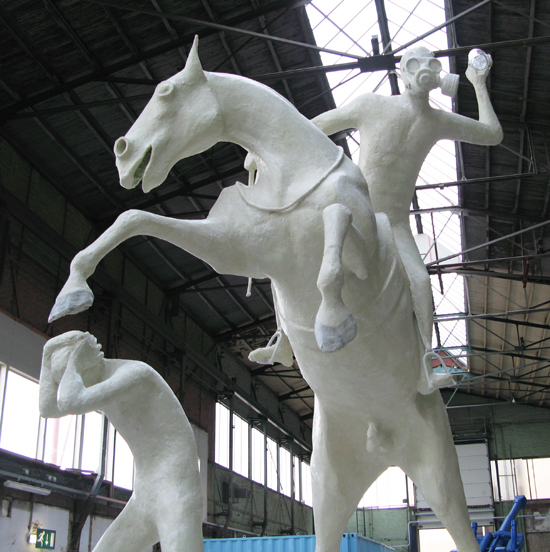 image © designboom
image © designboom
for lieshout, the sculptures reflect upon our extremely advanced and complex society. in which over-consumption and limited raw materials play a crucial role. he believes that this will lead to the emergence of various new cultures in the foreseeable future. once supplies are exhausted society will see a harshening of relations between people and increased survival instinct according to him. this raises the question whether such radical changes, which are coupled with violence but which may also lead to a new, improved society, are good or bad.
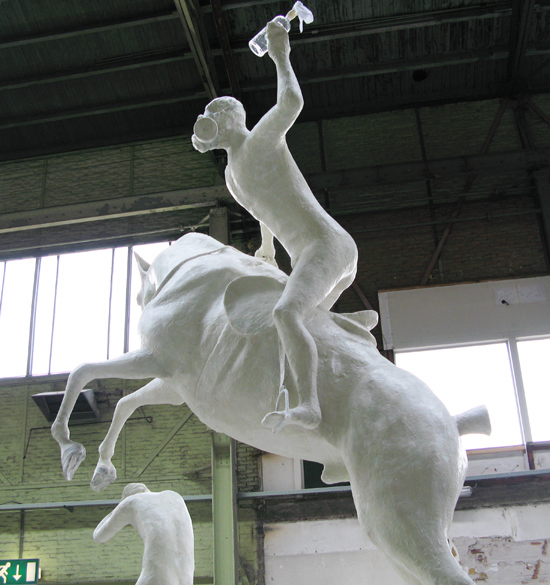 side view image © designboom
side view image © designboom
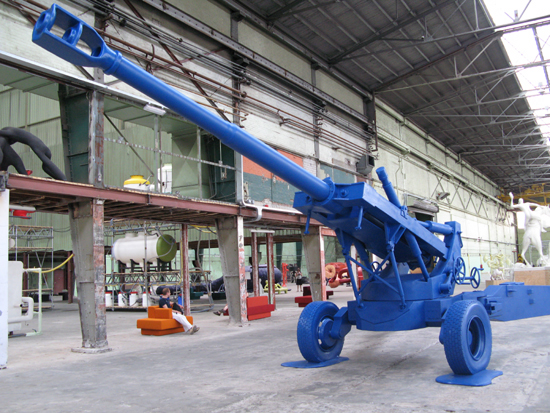 ‘WW III’, 2010 wood, steel, polyurea 1250 cm x 250 cm x 450 cm heroic sculptures image © designboom
‘WW III’, 2010 wood, steel, polyurea 1250 cm x 250 cm x 450 cm heroic sculptures image © designboom
 ‘arschmanner’, 2004 polyester, plastic 430 cm x 350 cm x 55cm the technocrat image © designboom
‘arschmanner’, 2004 polyester, plastic 430 cm x 350 cm x 55cm the technocrat image © designboom
another section of his show titled ‘the technocrat’ comprises all manner of apparatus, containers, beds and distillation vats. together they form a closed circuit of food, alcohol, excrement and energy.
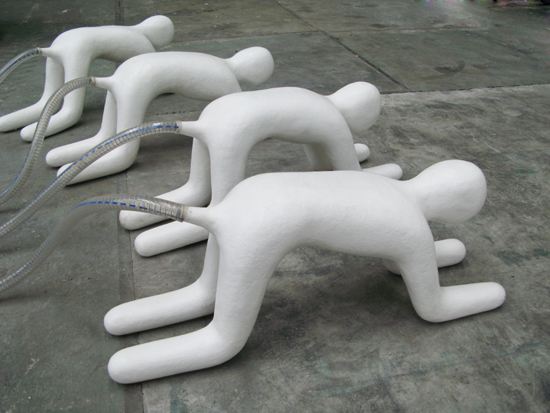 image © designboom
image © designboom
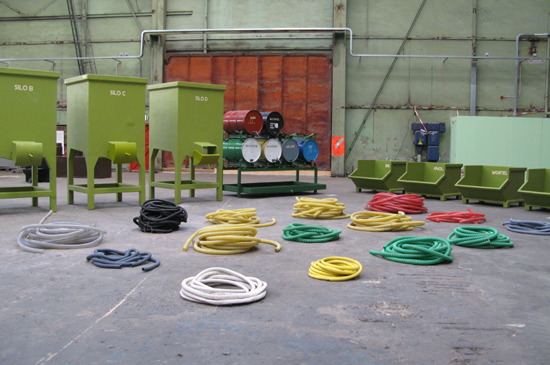 overview of ‘the technocrat’ network image © designboom
overview of ‘the technocrat’ network image © designboom
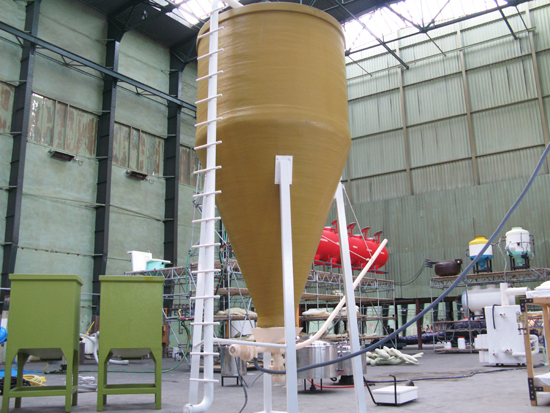 ‘autocomposter’, 2003 polyester, steel 180 cm x 180 cm x 560 cm the technocrat image © designboom
‘autocomposter’, 2003 polyester, steel 180 cm x 180 cm x 560 cm the technocrat image © designboom
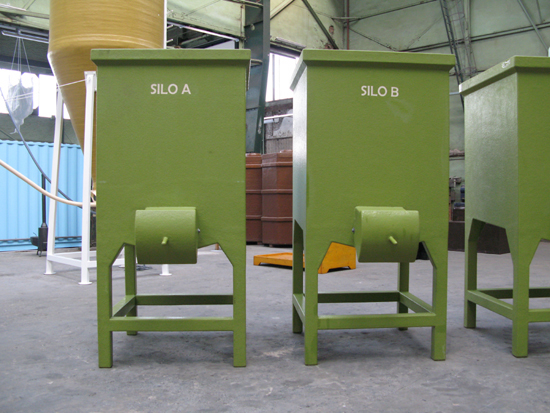 ‘the feeder’ the tehcnocrat image © designboom
‘the feeder’ the tehcnocrat image © designboom
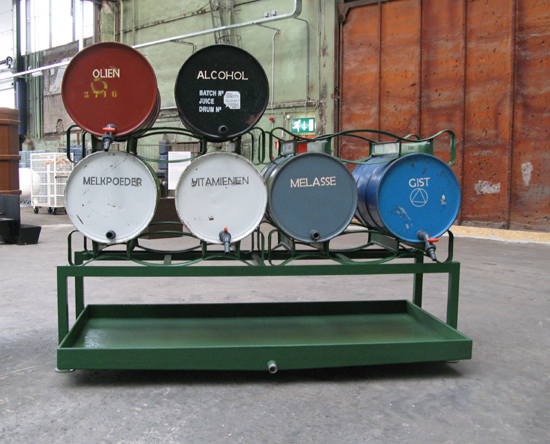 ‘storage unit for liquids’, 2003 steel, polyester the technocrat image © designboom
‘storage unit for liquids’, 2003 steel, polyester the technocrat image © designboom
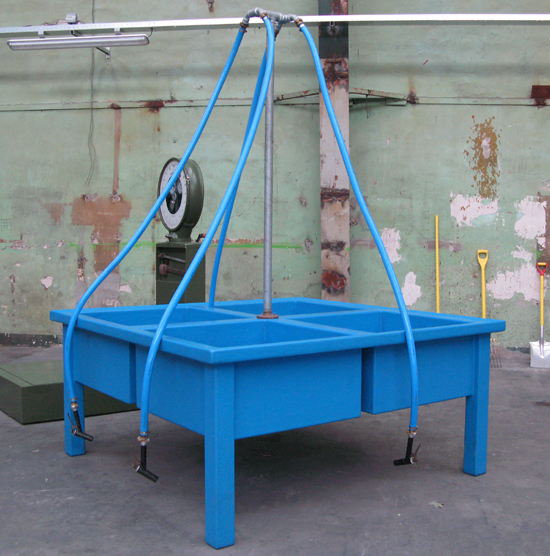 ‘large sinks’, 2003 staal polyester image © designboom
‘large sinks’, 2003 staal polyester image © designboom
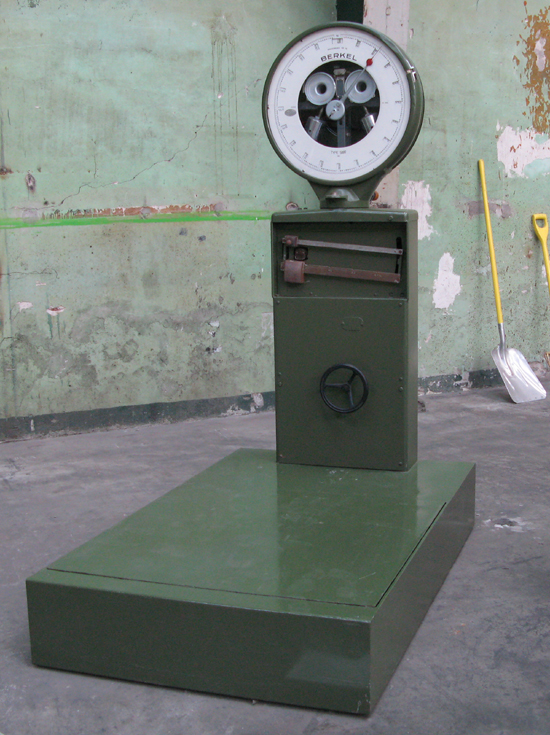 ‘scale’, 2003 steel, polyester the technocrat image © designboom
‘scale’, 2003 steel, polyester the technocrat image © designboom
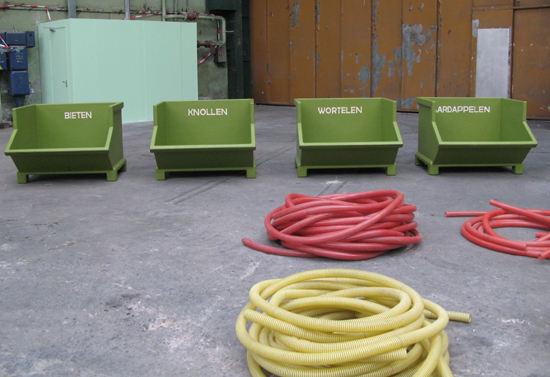 ‘containers’, 2003 polyester the technocrat image © designboom
‘containers’, 2003 polyester the technocrat image © designboom
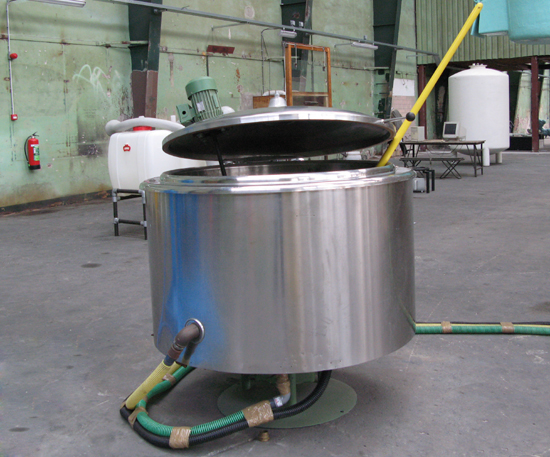 ‘cooker’, 2003 stainless steel the technocrat image © designboom
‘cooker’, 2003 stainless steel the technocrat image © designboom
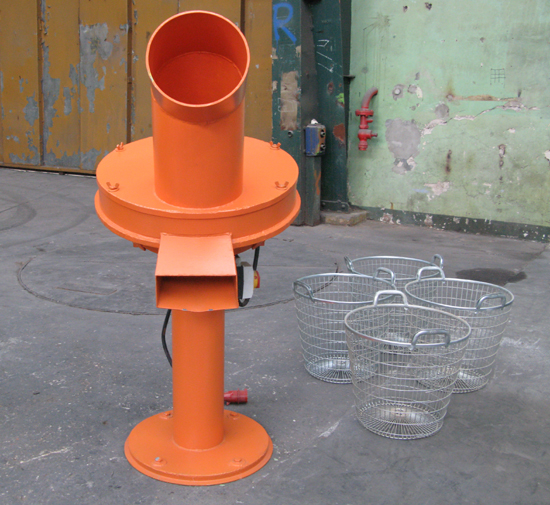 ‘vegetable cutter’, 2003 steel, polyester image © designboom
‘vegetable cutter’, 2003 steel, polyester image © designboom
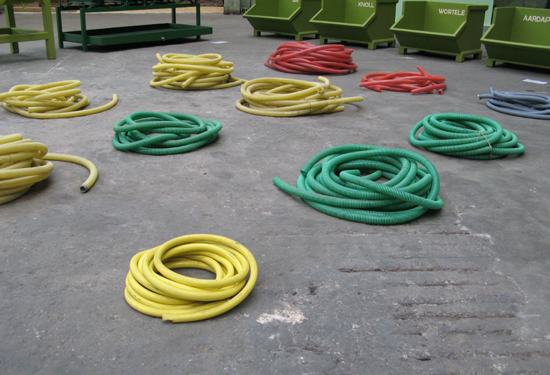 ‘tubes’ the technocrat image © designboom
‘tubes’ the technocrat image © designboom
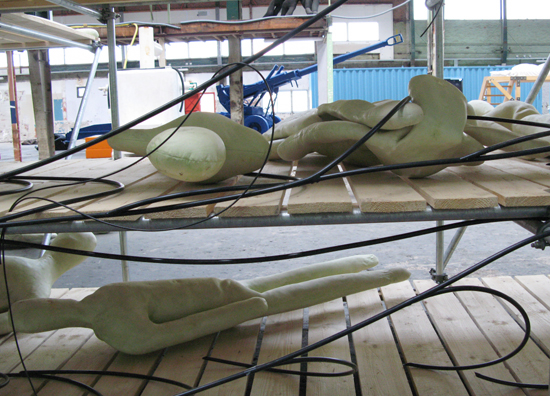 ‘the participants’ the technocrat image © designboom
‘the participants’ the technocrat image © designboom


